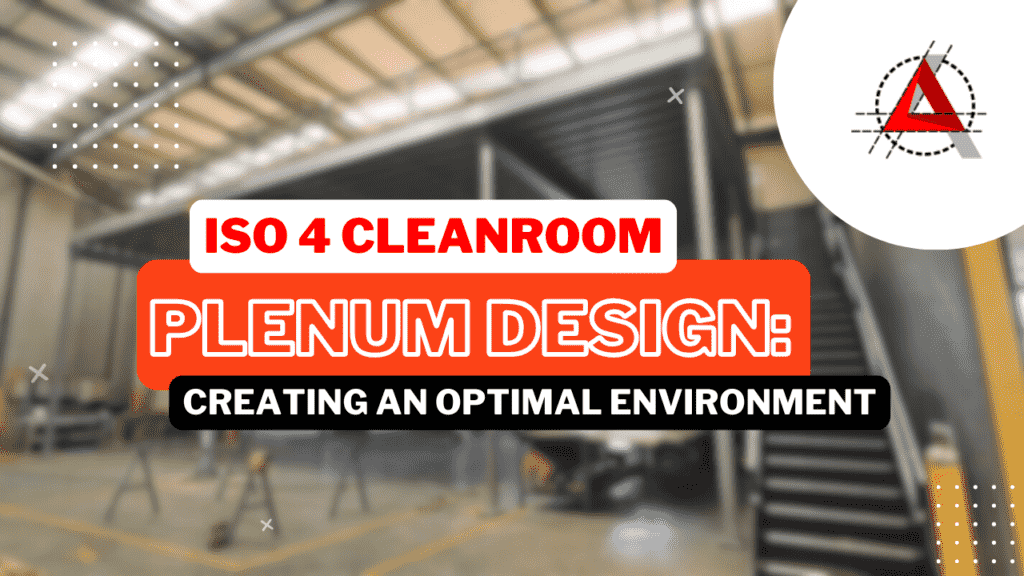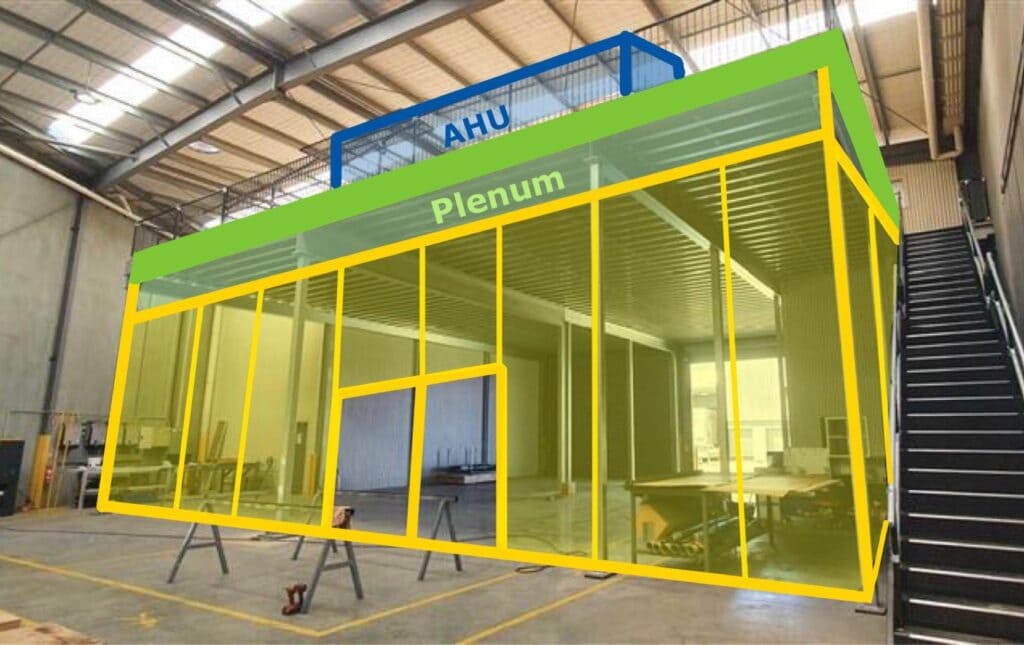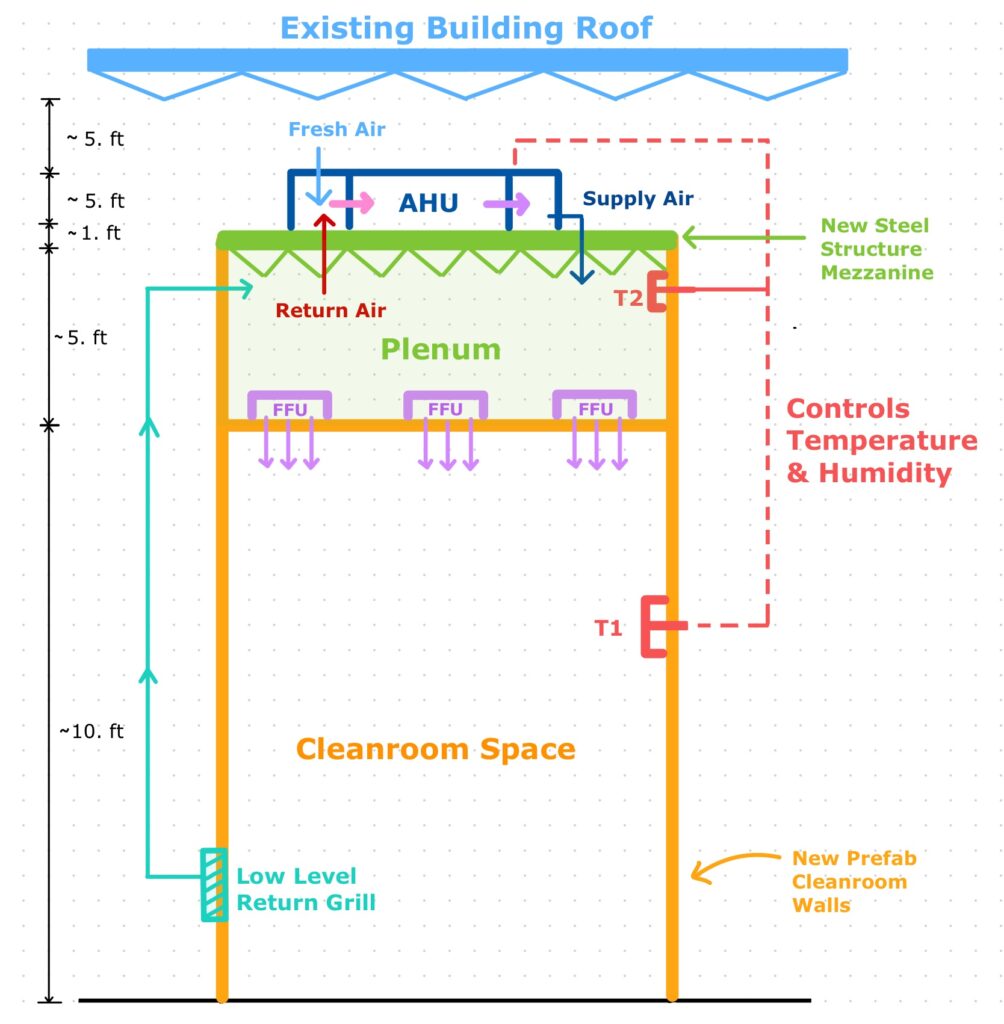ISO 4 Cleanroom Plenum Design: Creating an Optimal Environment

In cleanroom technology, the design of the plenum plays a crucial role in maintaining a controlled and contaminant-free environment. A cleanroom plenum is an enclosed space above the drop ceiling where air is supplied, filtered, and distributed to the cleanroom space below. ISO 4 cleanroom plenum design requires careful consideration and adherence to specific guidelines to ensure optimal performance. In this article, we will explore the key factors and considerations in designing an ISO 4 cleanroom plenum for an efficient and effective cleanroom environment.
Understanding ISO 4 Cleanroom and Considerations
Before delving into the design aspects, let us first understand what ISO 4 cleanroom classification entails. ISO 4 classification refers to an environment with extremely low levels of airborne particles. It demands a controlled atmosphere to prevent contamination of sensitive processes or products. Achieving and maintaining this level of cleanliness requires meticulous planning and adherence to strict standards.
The use of HVAC (Heating, Ventilation, and Air Conditioning) systems in ISO 4 plenum design is essential for maintaining a cleanroom environment. An ISO4 plenum is an enclosure designed to help control air flow and temperature by directing air from a central area—the plenum—into individual workstations or rooms. Professionally designed and installed, it helps create and maintain an ideal cleanroom environment.

When designing an ISO4 plenum, a number of key elements should be taken into consideration. These include the type of cleanroom, the size of the plenum, and its location in relation to the cleanroom. The plenum should be designed to allow adequate air flow to cool and heat the cleanroom while minimizing the chances of air circulation between rooms. A properly sized and designed plenum should be able to provide the correct air pressure and air flow rate needed for the cleanroom’s design.
The plenum should be made from materials that are inert, corrosion-resistant, and durable, such as stainless steel or aluminum. It should also be designed to reduce noise and vibrations, and to minimize air turbulence. Additionally, to prevent dust and debris from entering the plenum, the design should include filters and baffles to capture and remove air-borne particles.
When designing and installing an ISO 4 plenum, it is important to make sure that it is designed to be easily accessed and maintained. The plenum should be designed with access points to allow for cleaning and maintenance. Additionally, all components and parts should be clearly identified and labeled to eliminate any confusion when performing maintenance.
Proper Airflow and Distribution
An essential aspect of ISO 4 cleanroom plenum design is ensuring proper airflow and distribution throughout the cleanroom space. The plenum must be designed in a way that facilitates uniform air supply, preventing stagnant areas where contaminants may accumulate. By incorporating well-designed air supply diffusers and return grilles, the plenum can effectively distribute filtered air across the cleanroom, ensuring consistent cleanliness levels.
Effective Filtration and Ventilation
To achieve the desired ISO 4 cleanliness level, the plenum design should incorporate highly efficient filtration systems. HEPA (High-Efficiency Particulate Air) filters are commonly used to remove particles as small as 0.3 micrometers, ensuring a clean and controlled environment. Proper ventilation is equally important to eliminate any potential airborne contaminants and maintain a consistent air pressure differential.
Pressure Control and Monitoring
Maintaining the appropriate air pressure differentials is crucial in ISO 4 cleanroom plenum design. These pressure differentials help prevent the ingress of external contaminants and control the flow of air within the cleanroom. Implementing a reliable pressure monitoring system allows for real-time detection of any variations, ensuring prompt corrective measures to maintain the desired pressure differentials.

Minimizing Particulate Generation
ISO 4 cleanroom plenums should be designed to minimize the generation of particulates that could contaminate the cleanroom environment. This includes avoiding materials that shed particles, using smooth and easy-to-clean surfaces, and ensuring proper sealing to prevent air leakage. Additionally, regular maintenance and cleaning of the plenum system are essential to prevent the accumulation of contaminants over time.
Designing an ISO 4 cleanroom plenum involves a comprehensive approach to ensure the creation of an optimal environment for sensitive processes. Proper airflow and distribution, effective filtration and ventilation, pressure control, and minimizing particulate generation are all vital considerations. By incorporating these factors into the plenum design, cleanroom operators can maintain the desired ISO 4 cleanliness level, fostering a contamination-free environment for critical operations.
Remember, maintaining a meticulous ISO 4 cleanroom plenum requires ongoing monitoring, maintenance, and adherence to established protocols. By prioritizing these aspects, cleanroom operators can create a reliable and efficient cleanroom environment that meets the stringent requirements of ISO 4 classification.
Exploring the creation of a cleanroom with a higher ISO classification like ISO 4 or ISO 5, and seeking expert guidance? Feel free to reach out to us. Our team is committed to helping you set up a clean room environment customized to your exact specifications and cleanliness requirements. Contact us today to schedule a consultation! Take advantage of the opportunity to receive a complimentary quote or book your consultation call now!
GET IN TOUCH
Complete the form below to get in touch with our team.

